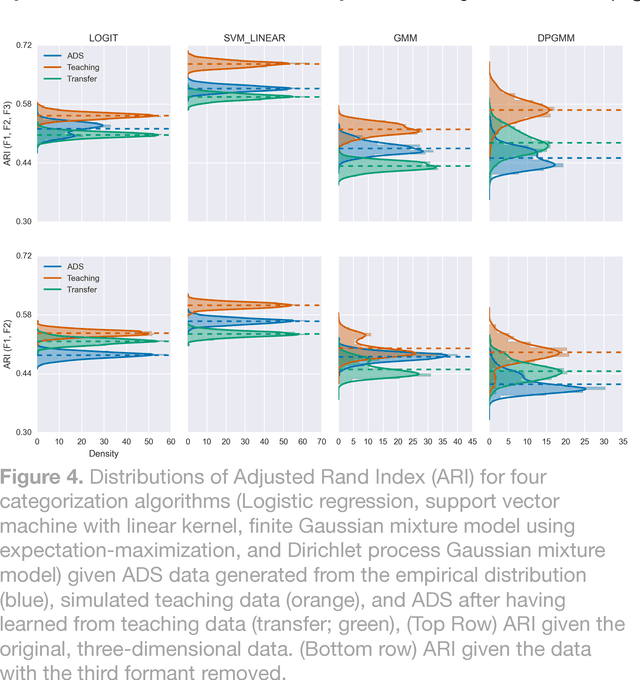Infant directed speech is consistent with teaching
Paper and Code
Jun 01, 2016
Infant-directed speech (IDS) has distinctive properties that differ from adult-directed speech (ADS). Why it has these properties -- and whether they are intended to facilitate language learning -- is matter of contention. We argue that much of this disagreement stems from lack of a formal, guiding theory of how phonetic categories should best be taught to infant-like learners. In the absence of such a theory, researchers have relied on intuitions about learning to guide the argument. We use a formal theory of teaching, validated through experiments in other domains, as the basis for a detailed analysis of whether IDS is well-designed for teaching phonetic categories. Using the theory, we generate ideal data for teaching phonetic categories in English. We qualitatively compare the simulated teaching data with human IDS, finding that the teaching data exhibit many features of IDS, including some that have been taken as evidence IDS is not for teaching. The simulated data reveal potential pitfalls for experimentalists exploring the role of IDS in language learning. Focusing on different formants and phoneme sets leads to different conclusions, and the benefit of the teaching data to learners is not apparent until a sufficient number of examples have been provided. Finally, we investigate transfer of IDS to learning ADS. The teaching data improves classification of ADS data, but only for the learner they were generated to teach; not universally across all classes of learner. This research offers a theoretically-grounded framework that empowers experimentalists to systematically evaluate whether IDS is for teaching.
 Add to Chrome
Add to Chrome Add to Firefox
Add to Firefox Add to Edge
Add to Edge